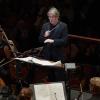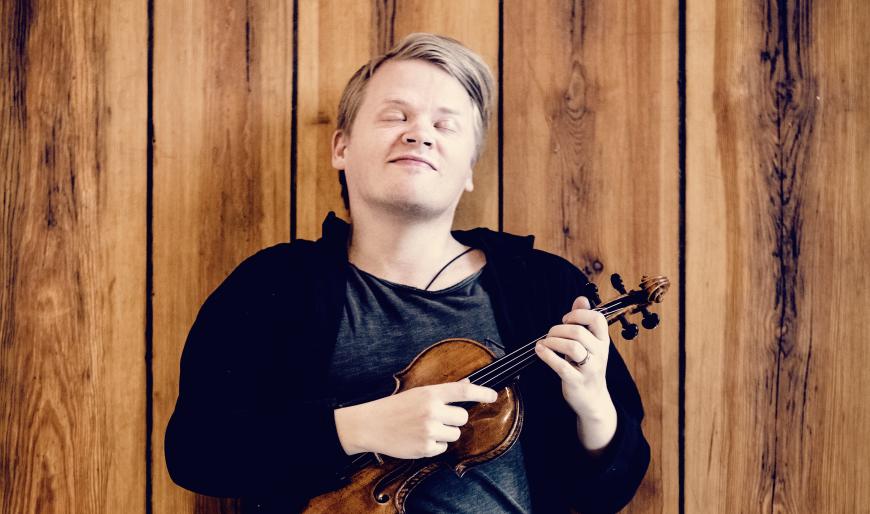
Talk about a multi-hyphenate! Finnish violinist Pekka Kuusisto is also a composer, folk musician, conductor, and curator, all while holding posts that include artistic director of the Norwegian Chamber Orchestra and principal guest conductor and artistic co-director of the Helsinki Philharmonic Orchestra. In addition, Kuusisto is a collaborative partner with the San Francisco Symphony, an artistic partner of the Mahler Chamber Orchestra, and the “artistic best friend” of the Deutsche Kammerphilharmonie Bremen.
Fortunately for Angelenos, Kuusisto will be at Walt Disney Concert Hall Oct. 27–29, performing Nico Muhly’s concerto Shrink. The program, which will be led by Esa-Pekka Salonen, music director of the SF Symphony and conductor laureate of the Los Angeles Philharmonic, will also feature the world premiere of Salonen’s Tiu, along with Richard Strauss’s An Alpine Symphony.
At 47, the Finland-based Kuusisto has many musical balls in the air, but his path, no doubt, was predestined. His grandfather Taneli Kuusisto was a composer; his father Ilkka Kuusisto, now 90, was also a composer; his mother was a music teacher; and his older brother Jaakko was a fiddler and composer. Beginning violin studies at the age of 3, the younger Kuusisto later enrolled in the Sibelius Academy in Helsinki, and from 1992–1996, he studied at the Indiana University School of Music.
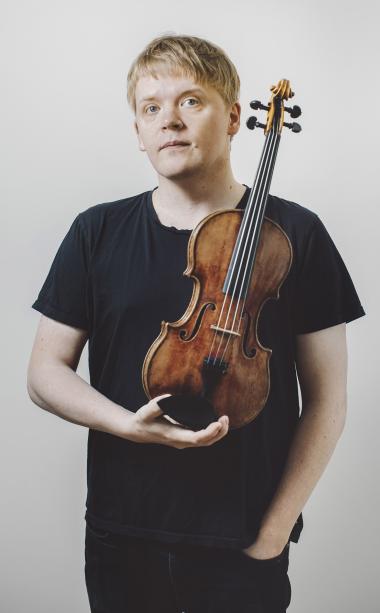
In 1995, Kuusisto was the first Finn to win the international Jean Sibelius Violin Competition. And he’s been in demand ever since. As a soloist, he’s performed with major orchestras all over the world, and his conducting highlights include appearances with the Gothenburg Symphony and the Concertgebouw Orchestra.
A champion of contemporary music, Kuusisto premiered Bryce Dessner’s Violin Concerto with the Frankfurt Radio Symphony in 2021 and subsequently performed it with the Philharmonia Orchestra and the SF Symphony. Of that last performance — the U.S. premiere — the San Francisco Chronicle’s Joshua Kosman wrote, “This is a concerto that requires stamina, imagination and insight from the soloist, and Kuusisto’s performance — tireless and expressive without being too bluntly athletic — was a marvel.” The violinist also premiered the orchestral version of Thomas Adès’s Märchentänze in 2021.
And did somebody mention recordings? Kuusisto has released several, including First Light with the Norwegian Chamber Orchestra (featuring Muhly’s Shrink) and a recording of Adès’s Violin Concerto (“Concentric Paths”) with Aurora Orchestra and Nicholas Collon for Deutsche Grammophon.
SF Classical Voice spoke with the perpetually busy Kuusisto over WhatsApp from Helsinki, with the violinist discussing his musical relationships, his attraction to conducting, and why Finland is a breeding ground for classical musicians.
You’ll be performing with Esa-Pekka Salonen and the LA Phil at the end of October, and you’re also a collaborative partner with the SF Symphony. How would you characterize your relationship with Salonen, and what does the collaborative partnership at SFS entail?
I had met Esa-Pekka a few times growing up. He’s enough of a different generation [that] when I was an up-and-coming fiddle player, he was out in the world. I was somehow aware of him when he was with the Swedish Radio Symphony Orchestra before the LA Phil. When he started in L.A., that’s when it really kicked off for him.
I played with him as a soloist approximately eight years ago, and since then, we’ve done a fair bit of stuff. The partnership with San Francisco is a lovely thing. It feels like a very live connection, but there’s no rules to it. It doesn’t mean I would play every season with them as a soloist. There’s no blueprint, [and] it’s the best. When people ask me privately what it means, I often say that it’s just an opportunity or responsibility to come up with dumb, strange, stupid, weird ideas, and the great team at the orchestra looks at them and decides if they’re something worth pursuing. The ideas evolve into something completely different on the way.
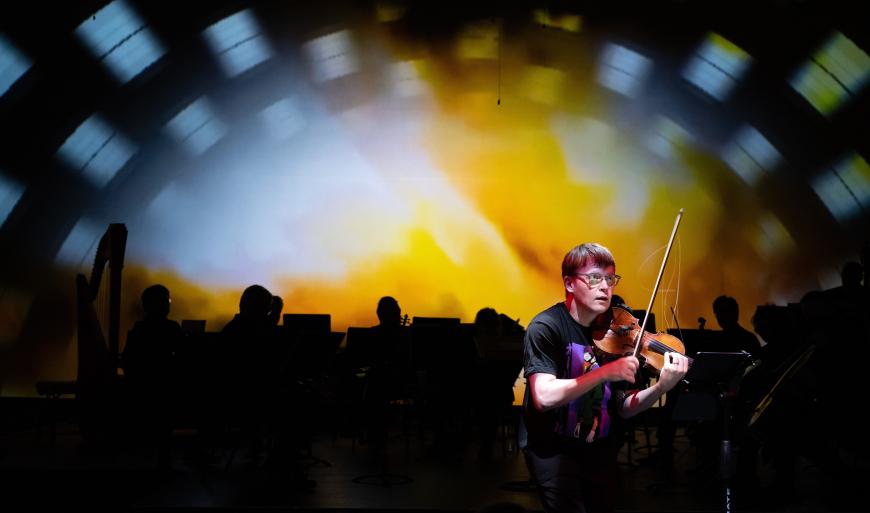
When did you first meet Nico Muhly, and what are your thoughts on Shrink, the concerto he wrote for you, which you premiered in 2019?
I met him for the first time in 2008 or 2009. He wrote a piece for Mark Padmore, the tenor, and myself [that we] performed with Britten Sinfonia. After that, he wrote for me Drones & Violin [2012], and we recorded it together. We’ve collaborated on a bunch of things, [but] Shrink is the most substantial.
It is wild and extremely fun, but it also has logic to it. It’s extremely well written, and there are a lot of notes. I don’t think I would want to leave any one of them out. They all feel very necessary. When Nico wrote it, we had already known each other for such a long time. It’s almost like a set of in-jokes. He knows so well what kinds of noises I like to make on my violin, and I have a feeling for what he enjoys hearing and writing.
There’s this underlying structure of winks and nods and smiles to the piece. It is a sort of accelerated lifestyle one lives when playing it. It’s extremely satisfying — like a high-velocity magic trick where everything falls into place — plus, it’s extremely beautiful music. The middle, in particular, is absolutely gorgeous.
What is it about Finland that seems to breed a lot of performers, conductors, and composers?
The country is quite empty. It’s very sparsely populated. There’s Russia to the east, Sweden to the west, and we are not related to them at all. I don’t know — there must be some kind of underlying reason why Finnish people already were kind of into serious music-making, but for the real phenomenon of Finnish musicians in the 20th century, we can probably thank Sibelius for the biggest part of it.
We were — and still are — such a small country, and he was such a global celebrity. He was on the cover of Time [magazine in 1937]. He really showed the Finnish people that being a musician, a composer of serious music, is something that can get you places. From then on, being a classical musician, or symphonic musician, it’s been a well-known profession.
My guess is that if you go to a place [in Finland] that’s far away from big population centers and you find a gas station where farmers are having coffee in the morning … they would be able to name a few Finnish musicians — Esa-Pekka Salonen, [soprano] Karita Mattila, [composer] Kaija Saariaho. [They’re] like household names. I don’t think that’s common in most other places. I think it’s also thanks to Finnish journalists who have stayed with people like Esa-Pekka. Their lives have been documented quite well for the entire Finnish population.
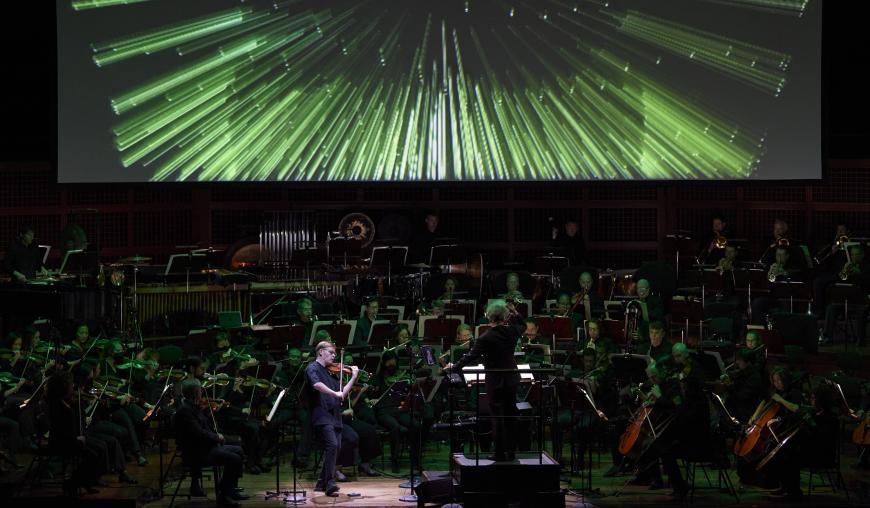
But I would add one thing: Sibelius’s symphonies are terribly good music. His Violin Concerto is good music but incredibly difficult to conduct properly. Orchestras want to play this music around the world and want to have conductors who know this stuff. If they get a Finnish person, they know it will be all right. It’s an unfair advantage we have. Finnish conductors know [these pieces] already from the get-go. It’s kind of rare.
Speaking of conducting, a hand injury had you pick up that role. How were you able to make that transition?
The hand injury was a couple of weeks; it was temporary. I was meant to be directing the Saint Paul Chamber Orchestra and [the Deutsche Kammerphilharmonie] Bremen during those weeks, and the doctor said, “Don’t.” [I said to the ensemble,] “I can’t direct you from the violin,” and they said, “Why don’t you conduct?” I had no idea what I was doing. The orchestra could have played without me.
I tried my wings and started learning it properly — and still am. I’ve played violin for the last 44 years, and I’ve conducted for a few years. I’m nowhere near on the same level of experience [with conducting], but mechanisms in these professions work so differently. Obviously, there’s a magnetism to conducting that one feels quite strongly, especially coming from Finland. There are so many good ones around here.
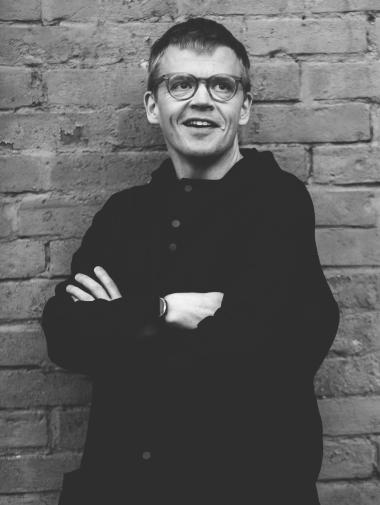
I don’t want to be this person who flaps their arms pretending to conduct pieces that don’t need a conductor. I really want to be good at the technical part of it, so it’s an ongoing process. I’m confident that eventually I will at least not be in the way. I’ve got a job now at the Helsinki Philharmonic [as] principal guest conductor for four or five weeks, [so] experience is coming in, and I need to counterbalance the experience with raw studying and learning so I don’t get caught in any bad habits.
Has Salonen given you any conducting tips?
When I went to my very first opera conducting course, he was one of the educators. I was put into a concert — “Dumbarton Oaks” by Igor Stravinsky — and I was mortified. [Salonen] told me I avoided the usual pitfalls, but I’ve learned a terrible amount from just watching him. I think that technically he’s an inspiring and extremely elegant conductor. The one thing I’m really a fan of is [how he creates] an atmosphere. In a rehearsal, the way he finds the balance between leading the orchestra when they need it and allowing people to play when they don’t need it. It’s a constant zooming in and zooming out that he’s nailed down so well. It feels completely instinctual despite [the fact that] I know there’s a lot of work behind it.
What do you look for in a commission?
Wonderfully strange and interesting things. I did Anna Clyne’s concerto [Time and Tides] a few weeks ago. She was aware that I’m into traditional music, and so is she. She selected four traditional tunes — one from Finland, one [each] from the United States, Ireland, and Scotland. She wrote me [this] concerto based on seafaring tunes. That was a nice process.
Bryce [Dessner] is one of my SF Symphony collaborative partners, so it’s nice to have him on board. I’ve been listening to his rock band forever, and to get to know him and have him write music for me is a nice gift. I’ve gotten some really beautiful pieces from composers who are quite well-established — Mr. Adès. Then there’s a lot of up-and-coming stuff that I try to keep track of and see who’s the next really gifted composer who needs an opportunity.
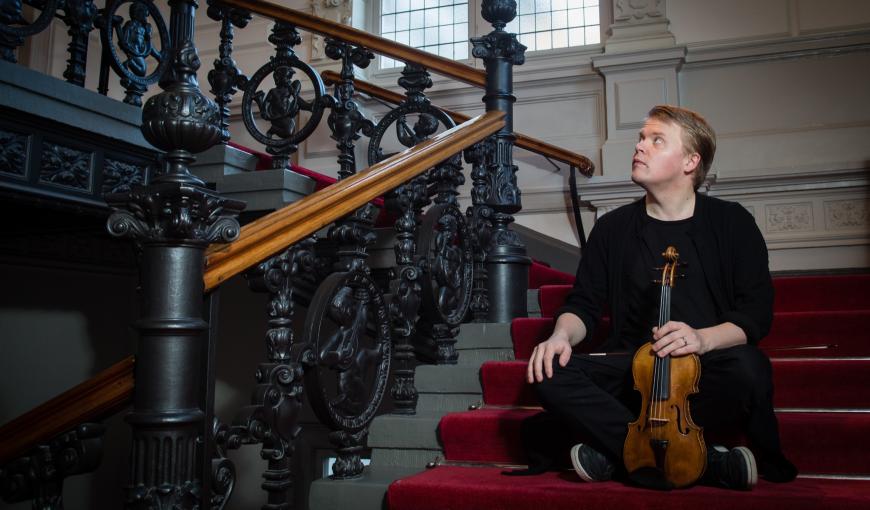
Regarding the younger generation, what advice do you have for aspiring violinists?
Don’t spend too much time on social media looking at what everyone else is doing. I’m happy I’m not growing up as a violinist now. It is not a sort of self-esteem-heightening profession to be in. [It’s] all based on knowing that you should be better, you should practice more, perfect your craft further. It’s been manageable in the past, but everyone is so far away from all the beautiful, fun-looking things.
It’s easier to lose your compass now than 10 or 15 years ago. Generally, the field of music is becoming a less preprogrammed trajectory for young, gifted violinists. They grow up and invent their own place in the music world. It’s not automatically this or that. It’s more scattered [and] not such a kind of bulletproof way to make a living as it used to be, which is scary.
But the by-product is there are more available paths [that] might provide a young player with a satisfied, successful life. Even if you’re not willing to play 18 Tchaikovsky concerto [performances], you can invent a life that doesn’t look like the careers of the past.


